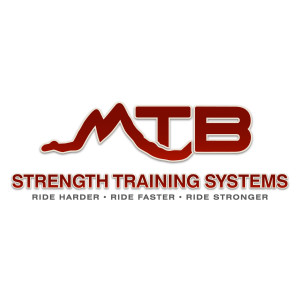
Something that I try hard to get riders to understand is that everything they do starts with their breathing habits. How you breath affects not only your cardio and endurance but also how well you move and can execute your skills on the bike.
If you have bad breathing habits then the easiest thing you can do to improve your performance is to fix those bad habits. You didn’t start out with bad breathing habits and your body wants to breathe in a more efficient and effective way if you give it the chance.
Something that can go a long way towards helping you do this is to use nose breathing as much as you can. Nose breathing is a more efficient way to breathe and can also go a long way towards improving your health as well.
However, one of the knocks on nose breathing is that you can’t use it at moderate or high intensity levels and that trying to do so will actually restrict your performance. This view is based on some studies that showed this to be the case with runners but new evidence suggests that there may be more to the story.
A newer study looked at nose vs. mouth breathing at different intensity levels but this time they used runners who had spent time adapting to it. The previous study had used runners who had not spent any time working on it before being tested and the new study wanted to see if that made a difference.
In today’s newsletter I go into what the study found and how it can be applied to your training for mountain biking. I’ve got the show notes below and a link to the live stream replay and the audio file from it as well. You can also find it on Itunes, Podbean, Spotify and all other major podcasting platforms.
Click Here To Watch The Video Or Download The Audio Replay
This study looked at the performance difference with runners who used nasal breathing when they switched to mouth breathing.
http://journals.aiac.org.au/index.php/IJKSS/article/download/4400/3407
A previous study had found that nasal breathing restricted peak intensity levels and wasn’t able to be sustained at high intensity levels.
That study didn’t use runners who had been training with nose breathing and this study wanted to see if there was a difference in those results after someone had trained and adapted to nose breathing.
They found a group of male and female runners who had been using nasal breathing exclusively during training and racing for at least 6 months.
They tested them on a VO2Max, a graded exercise test and physiological economy with both nasal and mouth breathing.
This had them do a maximal graded exercise test and then a steady state test at 85% of their top intensity during the graded exercise test.
They found that during the graded exercise test there was no difference in performance, VO2Max or peak lactate production.
However they did show a lower mean ventilatory equivalent for both oxygen and carbon dioxide.
This represents the amount of ventilation required for the consumption of each liter of oxygen and reflects ventilatory efficiency. It is measured as the ratio of the volume of gas expired per minute to the volume of oxygen consumed per minute
During the steady state trial they showed better physiological economy and a lower mean ventilatory equivalent for both oxygen and carbon dioxide.
The conclusion was that it is possible to use nose breathing at all levels of running intensity without a loss of performance and improved economy of how they are producing that energy after a period of training and adaptation.
They also concluded that nasal breathing is a way to maintain performance while improving your health.
While there are differences between running and mountain biking, I still think that there are some takeaways for us here.
Nasal breathing takes a period of adaptation to benefit from and there is likely to be a dip in performance as you do this.
The off season is a great time to make the switch to using nasal breathing more.
You should use nasal breathing as much as possible during your cardio workouts.
You can use running as a way to introduce it into your routine as well.
Give it a solid 4-6 weeks before making any conclusions about how it is going.
On the trail try to use nose breathing more, especially when you are at an easy effort level or trying to recover from a hard effort.
As you can see, nose breathing can be used effectively at higher intensity levels while also being more metabolically efficient and healthier for you. Be sure to check out the Better Breathing Program for more info on breathing and how you can improve your performance and health with better breathing strategies.
Until next time…
Ride Strong,
James Wilson
MTB Strength Training Systems
More Episodes
 2024-10-25
2024-10-25
 650
650
 2024-10-12
2024-10-12
 522
522
 2024-09-12
2024-09-12
 680
680
 2024-09-05
2024-09-05
 645
645
 2024-06-24
2024-06-24
 892
892
 2024-05-17
2024-05-17
 1.3k
1.3k
 2024-03-08
2024-03-08
 1.1k
1.1k
 2024-02-16
2024-02-16
 1.4k
1.4k
 2023-12-08
2023-12-08
 1.1k
1.1k
 2023-11-19
2023-11-19
 1.2k
1.2k
 2023-11-10
2023-11-10
 1.3k
1.3k
 2023-11-03
2023-11-03
 1.2k
1.2k
 2023-10-27
2023-10-27
 1.3k
1.3k
 2023-04-04
2023-04-04
 2.1k
2.1k
 2023-02-02
2023-02-02
 2.4k
2.4k
 2023-01-31
2023-01-31
 1.2k
1.2k
Create your
podcast in
minutes
- Full-featured podcast site
- Unlimited storage and bandwidth
- Comprehensive podcast stats
- Distribute to Apple Podcasts, Spotify, and more
- Make money with your podcast
It is Free
- Privacy Policy
- Cookie Policy
- Terms of Use
- Consent Preferences
- Copyright © 2015-2024 Podbean.com



